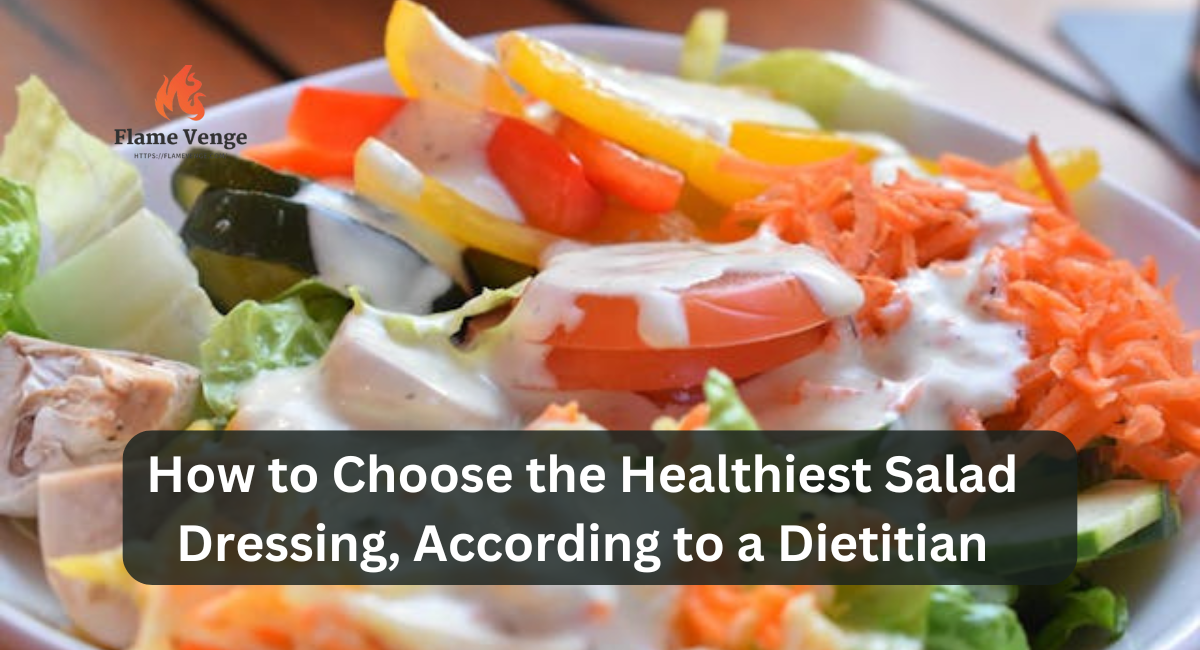Selecting a healthy salad dressing involves more than just picking a bottle off the shelf. To make a nutritious choice, you must understand the ingredients, nutritional content, and how it fits into your diet. This guide gives important advice on choosing salad dressings.
It helps you understand what ingredients are good and how to read nutrition labels. This can help you pick dressings that taste good and are also healthy for you.
1. Understand the Basics of Salad Dressings
Salad dressings can be categorized mainly into three types:
- Vinaigrettes: Typically made with oil and vinegar, sometimes combined with other flavorings.
- Creamy Dressings: These include mayonnaise or yogurt-based dressings.
- Specialty Dressings: These can include a mix of various ingredients like herbs, spices, and sometimes sugars.
2. Examine Ingredients
Oil Type
- Olive Oil: Olive oil is really great for your heart and has sound fats. Additional virgin olive oil is far and away superior since it keeps more cell reinforcements.
- Canola Oil: Lower in saturated fats and often used in commercial dressings. It’s a good alternative but less flavorful than olive oil.
- Vegetable Oil: Common in cheaper dressings but often high in unhealthy fats.
Vinegar or Acid
- Balsamic Vinegar: Adds flavor without many calories or sugars.
- Apple Cider Vinegar: Can offer additional health benefits like improved digestion and blood sugar regulation.
- Citrus Juice: Lemon or lime juice can make food taste good and give you vitamin C.
Creamy Ingredients
- Yogurt: Provides a lower-fat alternative to mayonnaise and adds protein and probiotics.
- Mayonnaise: High in fat, so opt for versions with healthy oils or reduced-fat versions.
- Buttermilk: Adds creaminess with fewer calories and fat than cream or mayonnaise.
Added Sweeteners
- Natural Sweeteners: Honey or maple syrup in small amounts can be healthier than high-fructose corn syrup.
- Artificial Sweeteners: Some prefer these for low-calorie options but watch out for potential long-term health effects.
3. Check the Nutritional Label
Calories and Fat
- Calories: Aim for dressings with fewer calories if you’re watching your intake. Most dressings contain 50-100 calories per tablespoon.
- Fat Content: Find dressings with good fats, like olive oil, and stay away from ones with lots of bad fats.
Sodium
- Sodium Levels: High sodium content can contribute to high blood pressure and other health issues. Opt for dressings with less than 200 mg of sodium per serving.
Added Sugars
- Sugar Content: Many dressings contain added sugars. Look for dressings with less than 2 grams of sugar per serving.
4. Consider Homemade vs. Store-Bought
Homemade Dressings
- Control Over Ingredients: Making your own dressing allows you to control the amount of salt, sugar, and unhealthy fats.
- Freshness: Homemade dressings often taste better and can be customized to your preferences.
Basic Vinaigrette Recipe:
- 3 tablespoons olive oil
- 1 tablespoon vinegar (balsamic, red wine, or apple cider)
- 1 teaspoon Dijon mustard
- Salt and pepper to taste
Store-Bought Dressings
- Convenience: Store-bought dressings are quick and easy but read labels carefully.
- Quality Brands: Opt for brands with natural ingredients and minimal additives. Brands like Annie’s or Primal Kitchen offer healthier options.
5. Identify Healthy Additives and Flavor Enhancers
Herbs and Spices
- Fresh Herbs: Basil, cilantro, and parsley can add flavor without extra calories or sodium.
- Spices: Paprika, cumin, or garlic powder can enhance flavor healthily.
Other Additives
- Nutritional Yeast: Adds a cheesy taste and provides B vitamins.
- Mustard: Adds tanginess with minimal calories and fat.
6. Focus on Balance
Incorporate Nutrients
- Add Protein: Choose dressings that contain yogurt or add protein-rich toppings to your salad to make it a more balanced meal.
- Combine with Fresh Ingredients: Use dressings on salads loaded with vegetables, lean proteins & whole grains for a well-rounded meal.
Avoid Overuse
- Portion Control: Even healthy dressings can add up in calories. Use dressings sparingly to avoid excess calorie intake.
7. Special Considerations
Dietary Restrictions
- Gluten-Free: Check for certifications or ingredients like wheat-based thickeners if you have gluten intolerance.
- Vegetarian/Vegan: Avoid dressings containing animal products such as anchovies or dairy-based ingredients.
Allergies
- Check Labels: Be mindful of common allergens like nuts or soy in some dressings.
8. Try Different Options
Experiment with Flavors
- Asian-Inspired Dressings: Often use ingredients like sesame oil and rice vinegar.
- Mediterranean Dressings: Often feature ingredients like olives, lemon juice, and garlic.
Taste Testing
- Small Batches: Make small batches of different dressings to find what you like best.
- Pairing: Test dressings with different types of salads to see what works best with your flavor preferences.
9. Health Benefits Beyond Nutrition
Boosting Salad Nutrition
- Enhanced Absorption: Healthy fats in dressings can help absorb fat-soluble vitamins like A, D, E, and K.
- Flavor Satisfaction: A flavorful dressing can make salads more enjoyable and satisfying, leading to better adherence to healthy eating habits.
Conclusion
Choosing a healthy salad dressing involves a balance of understanding ingredients, reading labels, and considering your dietary goals. Opt for dressings made with healthy oils, minimal added sugars, and low sodium. Homemade dressings provide control over ingredients and can be customized to your taste.
Whether you choose store-bought or homemade, focusing on quality ingredients and moderation will help you make the healthiest choice for your salads.
8 Supplements You Should Keep in the Fridge, According to Dietitians

